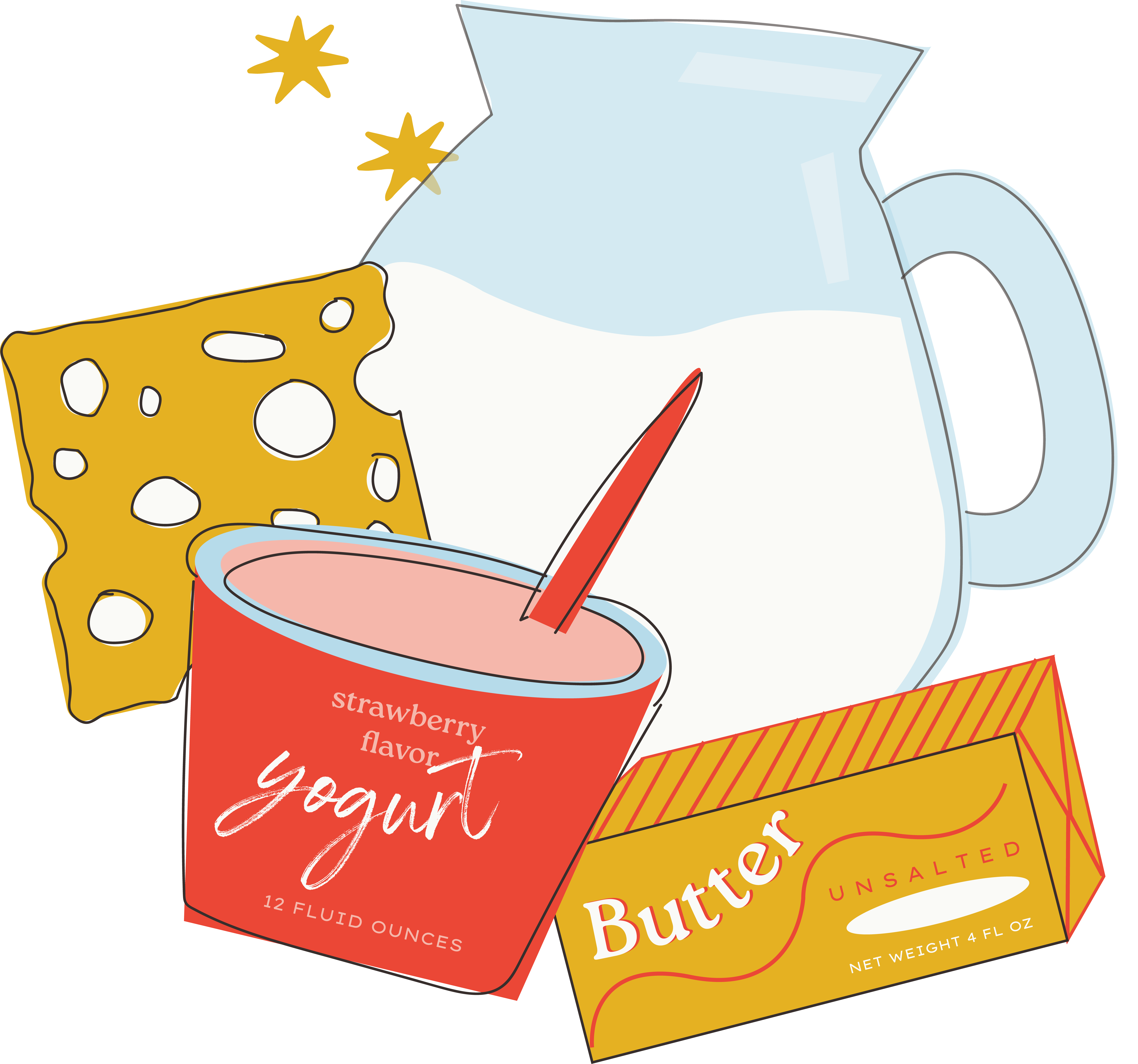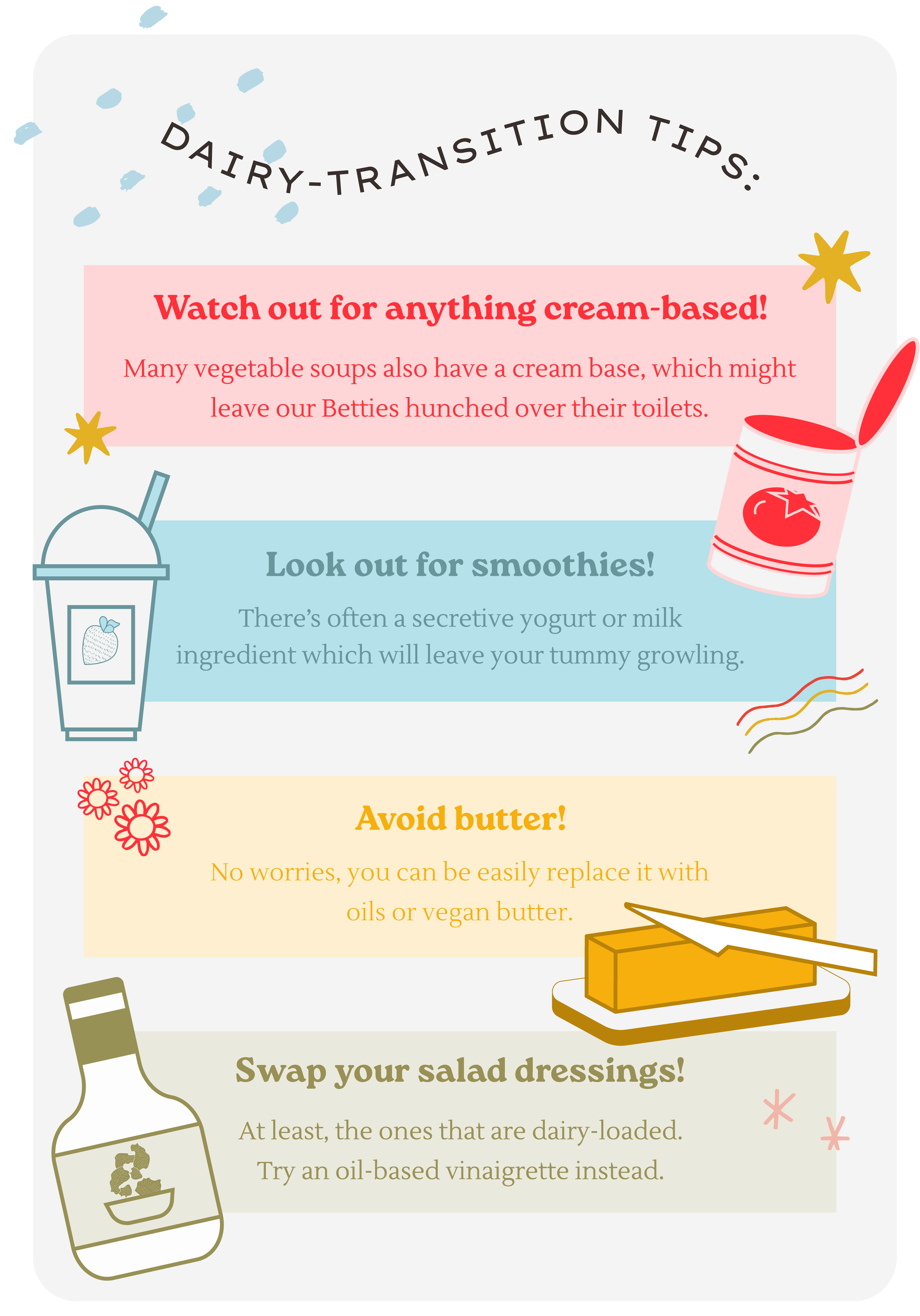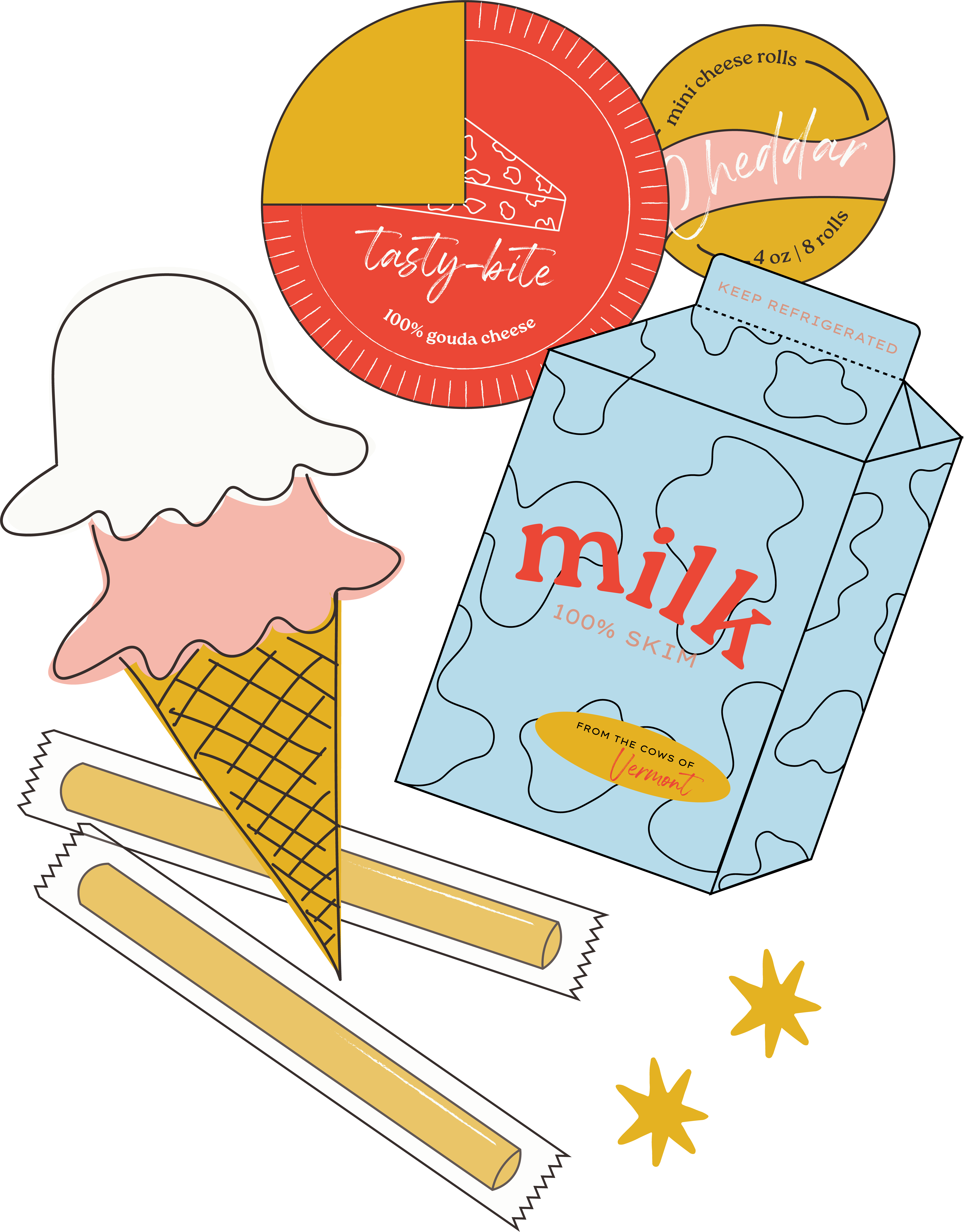Have you noticed how many social media wellness influencers are ditching dairy in their diets? Seriously, think about popular diets like Whole30, Paleo, and plant-based—no dairy. What’s up with that? Well, those who’ve decided to ditch dairy often claim health advantages like fewer skin breakouts and gastrointestinal issues. But do these health benefits hold up? And is dairy really all that bad?
Don’t worry, we’re here to help! Today, we are taking a deep dive into the dairy-free diet so you can consider all of your options before cutting out an entire food category!

Dairy: Yay or Nay?
Let’s start with the good.
Did a parent or teacher ever tell you in elementary school to drink all your milk? Probably! That’s because dairy contains a host of vital nutrients – calcium, protein, vitamin D and vitamin B. Turns out, milk does do a body good!
Dairy also makes up a lot of crowd favorites like ice cream, cheese, milk, butter, yogurt, and chocolate. This is where some can get into a little trouble though. A high-dairy diet carries some bummers, including bloating, fatigue, gastroesophageal reflux disorder (a type of acid reflux that can irritate the lining of the esophagus), acne, eczema, and thickened sinus drainage (aka snot).
Although you may want to go HAM on that Ben & Jerry’s, being a dairy consumer requires discipline. Moderation is the key. Actually, if you talk to the average doctor, they would probably recommend eating all foods in moderation instead of restricting any one type. So, be mindful of your consumption and balance of ALL foods.
When Dairy is a No-Go
But what if eliminating dairy from your diet isn’t a choice? For some Betties, consuming dairy isn’t possible due to an allergy or aversion or even a cultural practice.
Lactose Intolerance + Sensitivity
It may surprise you to learn that more than HALF of the adult human population has a dairy sensitivity! We know, right?!
The more familiar term for a dairy sensitivity is “lactose intolerance.” Lactose?! Who’s she? Basically, lactose is a sugar molecule. Some people can’t digest lactose (hence: lactose intolerance), which leads to gastrointestinal distress and causes gas, bloating, stomach cramps, and diarrhea. Yikes!
The Scientific Take ??
For our STEM-y Betties, the real reason some of us experience lactose intolerance is because our bodies are often deficient in the enzyme lactase, which breaks down lactose.
There’s no way to naturally increase your body’s production of the lactase enzyme, but breakthroughs in food technology have resulted in lactase supplements. You can take these simultaneously with eating dairy products to ease indigestion and discomfort.
We recommend determining the severity of your sensitivity to see how much dairy you can tolerate and how the lactase supplements affect you. First, eliminate dairy from your diet for a short period of time. Then, start adding it back into your diet in small quantities. If your symptoms worsen, consider taking lactase supplements or lactose-tolerance pills. If they improve, you can proceed by increasing the intake of dairy moderately, alongside a lactase supplement.
Keep in mind, for some, the lactase enzyme doesn’t relieve symptoms at all and may lead to constipation. But, if you’re a dairy-lover, give it a try and see if it works for you!

Casein Sensitivity
Okay Betties, there’s another dairy allergy to know about.
They may also produce non-gastro reactions like swollen lips, mouth, tongue, face, or -throat, as well as skin hives, rash, redness, itching – *pauses to breathe* – nasal congestion, sneezing, runny nose, itchy eyes, coughing, and pain. Depending on the severity of the casein allergy, one may choose to limit or straight-up eliminate dairy products from their diet.
Unfortunately, this complicates dietary preferences further, as there is a difference between dairy-free and lactose-free options. Lactose-free options still contain milk proteins – and hence, casein – while dairy-free may be casein-free but contain lactose or another dairy component. If you’re a Betty with a sensitive tummy, be wary!
Remember that allergies are serious and should not just be brushed off! Signs of anaphylaxis, a life-threatening allergic reaction, can include difficulty breathing, redness, hives, and swelling. Always be alert and aware of your symptoms, as anaphylactic shock can be fatal if not treated promptly.
How to Safely Reduce or Eliminate Dairy
When you consider eliminating an entire food group from your diet, it’s important to assess what valuable nutrients you are simultaneously, and perhaps unconsciously, eliminating from your diet. A dramatic diet adjustment will require careful thought and consideration to ensure you are maintaining healthy eating practices.
Begin by reading the food labels. This is crucial to ensure you choose the best product for YOUR body. When choosing dairy alternatives, make sure they contain vitamins D, E, and A as well as calcium. Here’s a brief guide as you seek out dairy replacements:
? PROTEIN
How much you need: Protein should make up 20-35% of your daily calories – so, tailor that percentage to your individual needs and intake.
Where you can get it: Foods high in protein include legumes, eggs, whole grains, meats, and tofu.
? CALCIUM
How much you need: 1,000 to 1,300 milligrams per day
Where you can get it: Get your calcium fix through legumes, salmon, tofu, kale, collard greens, orange or cranberry juice, soy milk, and breakfast cereals.
? VITAMIN D
How much you need: 800 IU (international units) per day
Where you can get it: Although vitamin D is absorbed through sunlight, you can get your dose of D by eating tuna, salmon, orange juice, soy milk, egg yolks, mushrooms.
? VITAMIN B
How much you need: 1.1 to 1.3 milligrams a day
Where you can get it: Vitamin B is obtained from dark, leafy greens, whole grains, and meat.
It’s All About Moooderation

As with most things health and diet-related, there is not a “one-size-fits-all” gospel. If you’re on the fence about adopting a dairy-free diet, ask yourself some important questions about the source of your nutrients. If you don’t experience any symptoms of dairy intolerance, then choosing a dairy-free diet is completely up to you! A dairy-heavy diet heavy comes with some health consequences, but consuming dairy in moderation, with an otherwise well-balanced meal, does not have negative health outcomes.
For our Texas-based Betty’s, we’re open to answering
your comments, questions, and concerns.
SCHEDULE your Betty’s appointment today!







Join the conversation